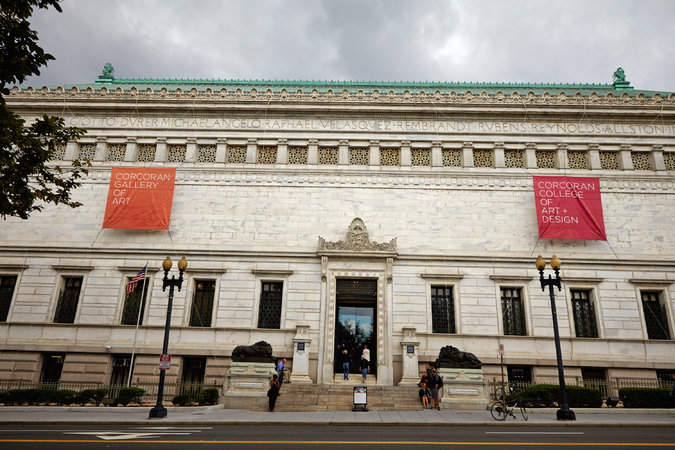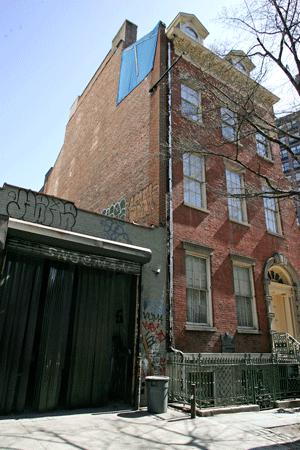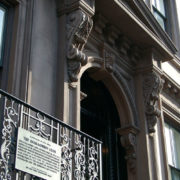The Cost of Caring for Art: Art Law’s Role in the Corcoran Case.
Ruth Osborne

Corcoran Gallery in D.C. Courtesy: New York Times.
Several similar battles have emerged this year in the museum world; battles over the mismanagement of important art collections and the unfortunate consequences for the artworks involved.
In the case of the Delaware Art Museum, a collection has begun to disintegrate in the interest of keeping the doors open to the public after owing millions in bond debt after a major building expansion. Meanwhile, the Corcoran Gallery in Washington, D.C. is struggling to maintain its collection by joining with the National Gallery and abandoning its historic 1897 Beaux-Arts building just steps from the White House.
In each of these instances, items of cultural and artistic significance are being forsaken due to responsibility falling on the shoulders of those unwilling or unqualified to provide strong enough support. Caring for art is not – nor has ever been – a simple task. But as the beginnings of the Corcoran court case have illustrated this week, it demands highly discerning Board leadership and financial management. The Delaware Board using deaccessions as an answer to refilling a museum’s budget goes against the fundamental purpose of a museum to care for and preserve works of art for the public. Works are treated like fluid assets and bargaining chips, not priceless cultural artifacts to be cared for. Owners are neglecting their call to be stewards of these collections, instead treating them like cultural capital to be traded. In the on-going struggle between bankrupt Detroit’s creditors and the DIA’s supporters, art is being asked to clean up after a city government that could not keep itself afloat.

Merchants House in Lower Manhattan. Courtesy: The Villager.
Across the Atlantic, the Maeght Foundation in France has a new Director looking to make up for its budget deficit by auctioning off works from its collection, which he believes would not be much affected by deaccessions. Director Olivier Kaeppelin “wants the foundation to be free to sell works. The collection is valuable.” Furthermore, a study by France’s Ministry of Culture this July identified the shortcomings of more than 1200 museums nationwide in caring properly for their collections. From the curator’s and collection manager’s perspective, this comes down to having the right storage and staff to care for the objects. But that all depends on a museum’s money being spent in the right way, and on fundraising that keeps collections preservation as the ultimate goal, rather than new gallery expansions.
But who is to answer if the governing board in question fails to account for their lack of good stewardship? Where a museum’s trustees fail, other major donors and supporters can step up (as in the case of the DIA and Corcoran). But what happens when outside support systems fail as well? Here in New York, the month of April signaled the final nail in the coffin of the Merchant House Museum’s fight against damage from new construction next door. The state institution charged with defending the interests of art and historic preservation was unable to prevent a new hotel from going up. Now, with 6-1 approval from New York’s Landmarks Preservation Commission, the 180 year-old landmarked building and superior interior plasterwork will now suffer greater damage for the sake of a new hotel that surely could have been built elsewhere in the trendy NoHo neighborhood.
The law is the last system in place to defend the interests of a collection. The role of art law often ends up being essential in deciding how museums and historic sites fight to preserve their collection. It sets parameters for what should be expected of a museum board or director; it determines what should be expected from those in such positions and creates an arena in which they can be called to account for their actions. For the Corcoran, the question of what will happen remains to be answered by the D.C. Superior Court. The battle over the Corcoran’s proposed dissolution will be sure to set precedent for (inevitable) future struggles over museum collections. Questions of board mismanagement, the appointment of an unqualified director, and an inability to fundraise have thus far been raised. Representing the “Save the Corcoran” group, lawyer Andrew S. Tulmello has even gone so far as to argue: “the museum trustees have long operated as if the Corcoran had no future.” ArtWatch will be keeping tabs on what is sure to be a serious debate over board and directorial ethics, items coming under greater scrutiny in today’s changing non-profit development and donor climate.











Leave a Reply
Want to join the discussion?Feel free to contribute!